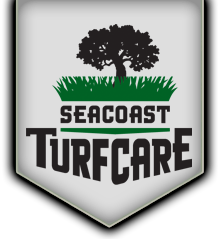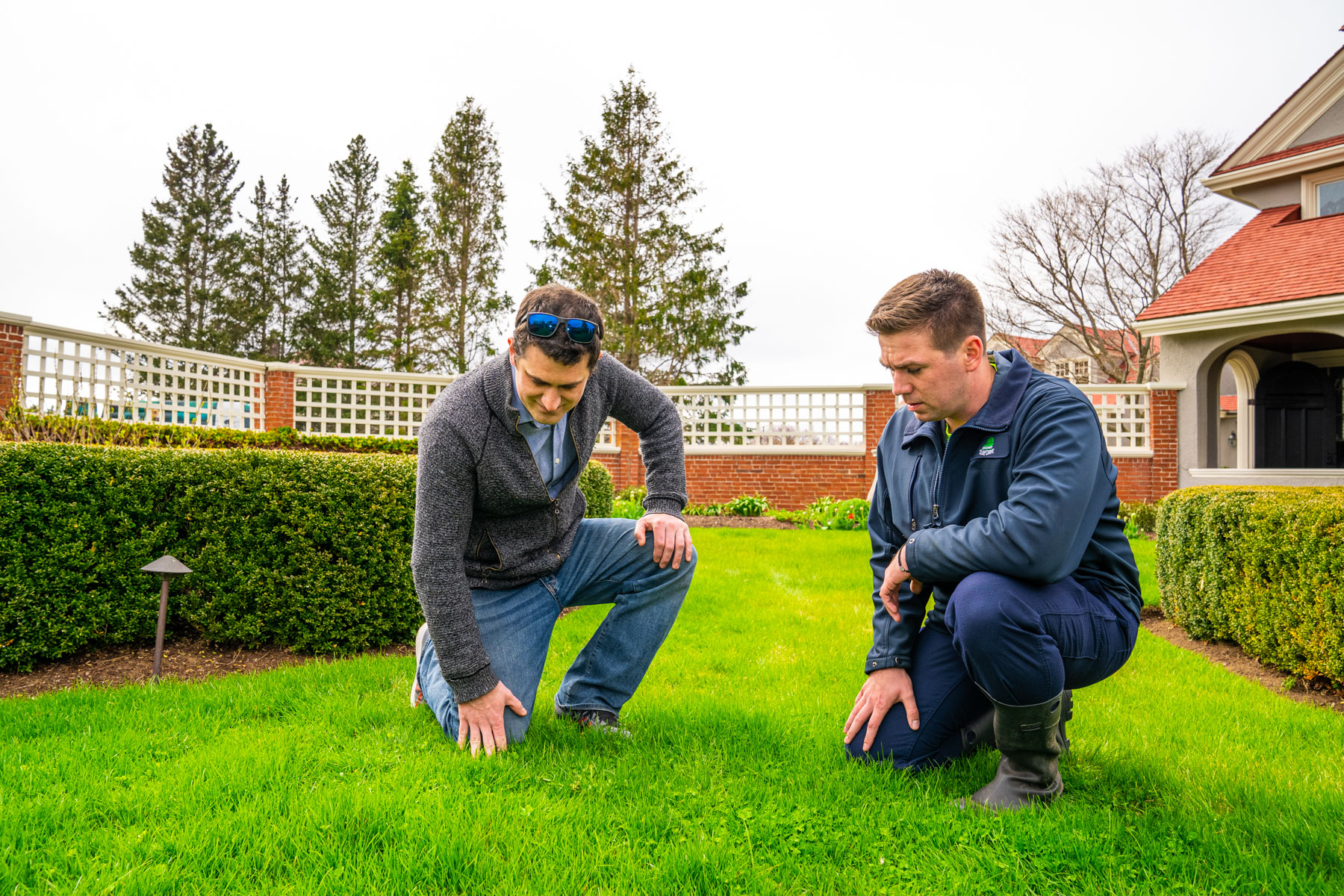
The Essential New England Lawn Care Guide
The idea of having a healthy lawn that you’re proud to show off is probably appealing. But you know it’s about so much more than just looks. While you want to take pride in your property, you also know that your lawn is at the heart of your outdoor experiences.
You want your lawn to be thick, lush, and healthy because you want to be able to spend a lot of time outside with your family.
Of course, a healthy lawn doesn’t just happen. There’s a lot that goes into lawn care in New England, particularly here in the seacoast region, where the weather can be challenging.
While knowing what’s best for your lawn can seem overwhelming, you don’t have to figure it all out on your own. We’re here to talk about how to take care of a lawn in New England, with all the helpful tips and guidance you’ll need.
By making smart decisions for your lawn, you’ll be on your way to lawn care success.
Table of Contents
- Understanding Your New England Lawn
- Lawn Care Basics for New England Homes
- Advanced Lawn Care Techniques
- Dealing with Lawn Problems
- Sustainable Lawn Care
- Hiring Professional Lawn Care Services in New England
Understanding Your New England Lawn
Contrary to popular belief, all lawns are not created equally. While there are some general guidelines that everyone should be following for their lawns (no matter where they live), the specifics of those guidelines do boil down to where you reside.
Even here in New England, there are differences. For instance, different New England grass types, micro-climates, and soil types can impact your results.
For these reasons, it’s quite important that you have a good understanding of your New England lawn.
New England Lawn Characteristics
In order to understand how to take care of a lawn in New England, you must first have a sense of what you’re dealing with, including the type of soil in New England.
New England lawn soils tend to be highly acidic, which can be the source of various woes.
If you remember back to chemistry in school, pH is a way to measure the amount of acidity or alkalinity that is present. Soil, at its midpoint, has a pH of 7. This is neutral territory, meaning it is neither acidic nor alkaline.

Extreme acidity falls on the low end of the scale while extreme alkalinity is at the high end. When soil goes too sharply into the acidic category, it can alter the chemistry and struggle with nutrient uptake. This can lead to deficiencies that cause your grass to struggle.
There are also different New England grass types to keep in mind.
While many different grass types grow here, based on our research, we have found that an optimally-performing grass is a Rye Grass Blend. This type is native to our region and can therefore perform well within our coastal climate. It’s also a hardy grass type that tends to grow quickly.
Lawn Health Indicators
Often, if something is going on with your lawn, there are going to be signs. Some of the signs that trouble could be brewing include some of the following red flags.
- Thinning
- Discoloration
- Powdery substances or lesions on the grass blades
- Grass pulling up
- Bare spots
Figuring out what might be causing these issues can be challenging and might take some sleuthing. In many cases, it can be a combination of problems.
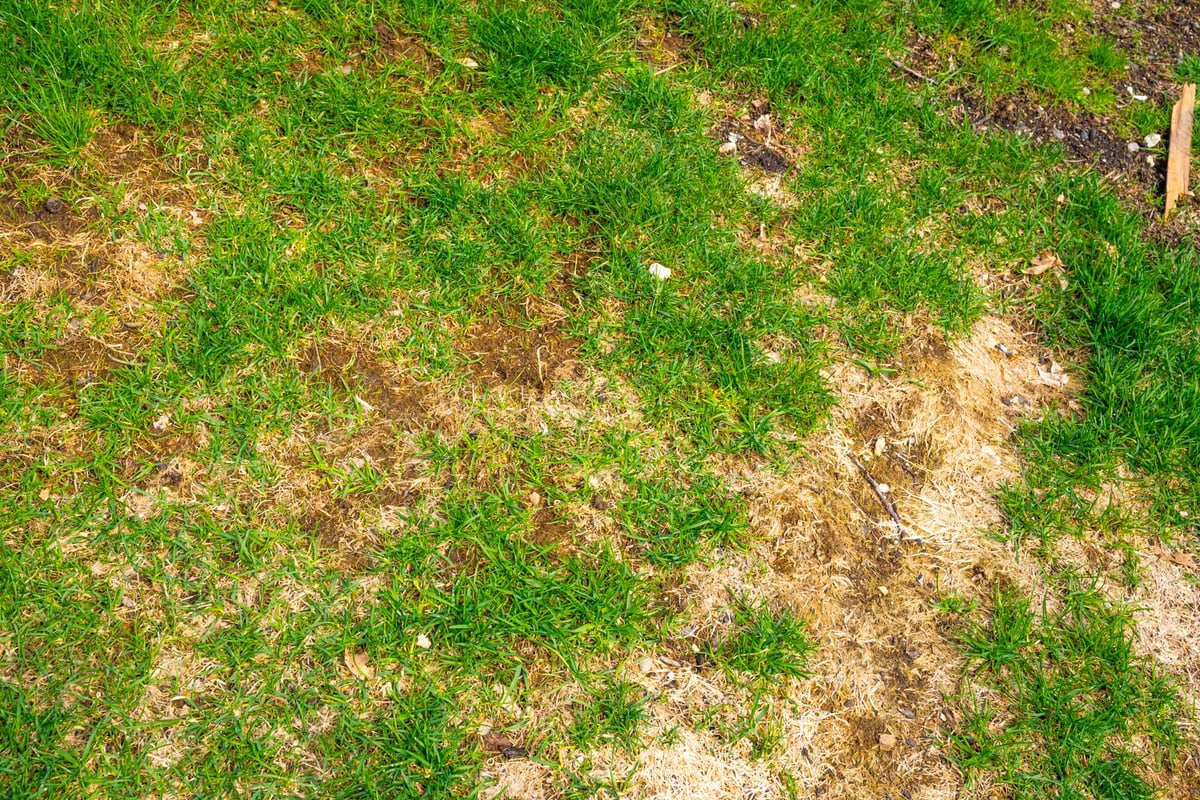
But there’s definitely a noticeable difference between a lawn that is struggling and one that is healthy. A healthy lawn tends to be thick and green and has minimal bare spots or thin areas. Allowing your lawn to struggle for too long may result in the need for extensive grass seeding - or costly sod installation - to bring it back from the brink.
Lawn Care Basics for New England Homes
The best way to care for a New England lawn starts with understanding some of the basics. Let’s take a look at some of the key considerations for your New England lawn.
Soil Health and Testing
A lawn is ultimately only as healthy as the soil that it’s growing in, which is why soil testing makes a lot of sense. A soil test is a tool that involves pulling samples from the lawn and having the soil pH and nutrient makeup tested.
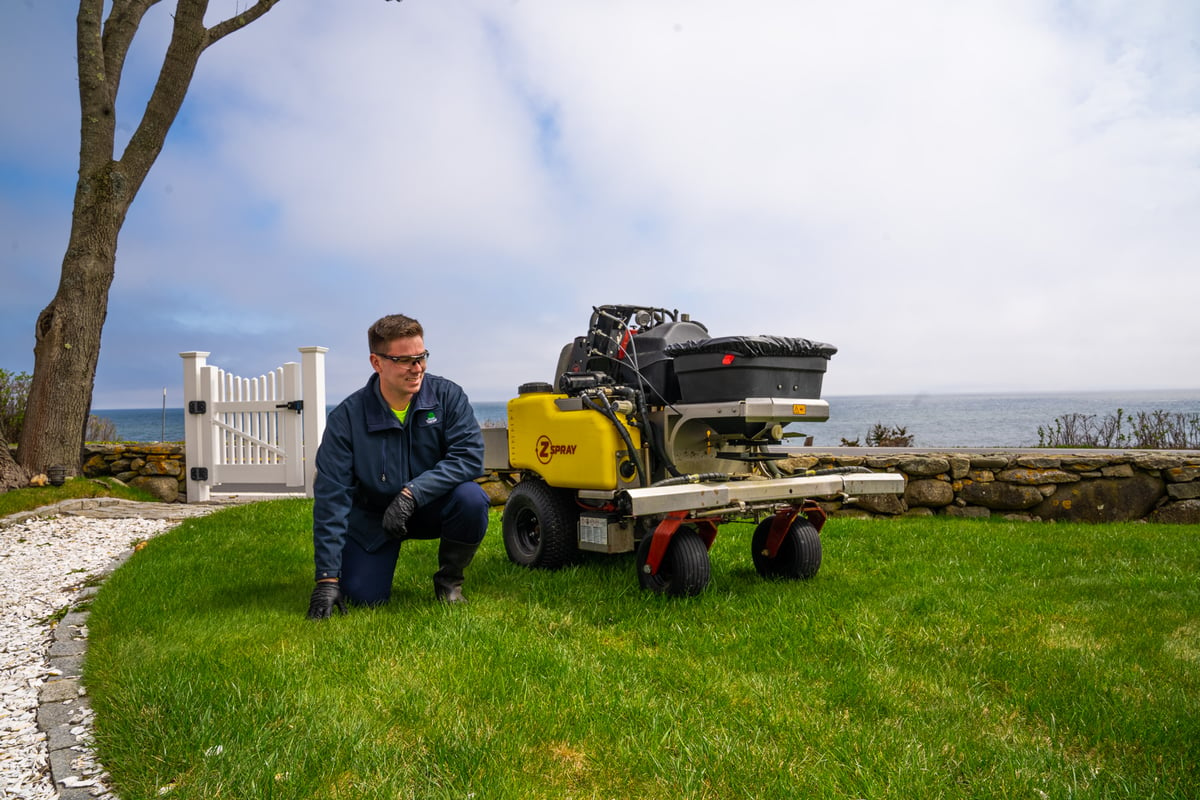
Although they do sell home soil tests in stores, these do not tend to be nearly as accurate as professional soil testing. When a professional tests your soil, they’ll likely be pulling multiple samples from different areas of the lawn and then sending those off to a professional laboratory for expert results.
But it’s not just about the accuracy of the test as much as it is what you do with the results. When you have a professional do your soil testing, they’re also interpreting that data and taking action based on the results.
Effective Watering Techniques
Another New England lawn care basic is proper watering.
As you know, water is essential to all living things. Yet, watering the lawn sometimes gets overlooked. It’s one of those tasks that homeowners commonly forget or fail to realize just how critical it is to your lawn’s success.

Established lawns typically require around one to two inches of water per week. In the springtime when it is rainy, Mother Nature might be supplying that. But during periods of drought, you may need to step up your watering efforts.
Aim for a deep soak when watering the lawn as this will help water reach the root zone where it’s needed most. In addition, avoid watering the lawn late in the day or at night as this can make your lawn more prone to disease due to fungal growth.
Instead, water your lawn in the early morning. This will give plenty of time for the water to reach the lawn’s roots before evaporating (as can happen in the heat of the day).
Mowing Practices for Healthier Lawns
Mowing is another vital aspect of lawn care in New England. While mowing isn’t rocket science, people tend to underestimate the importance that it’s done right.
A common mowing mistake is mowing the lawn too short. The exact cut height depends on the New England grass type that you have growing. For instance, Rye Grass should typically be maintained at 1.5 to 2.5 inches.

When you mow grass too short, you put excessive stress on it. This can cause the grass to turn yellow.
Also, be sure to keep up with mowing frequency. It’s better to mow more often, making less intensive cuts than it is to go weeks between mowing and then have to make drastic cuts.
Another good mowing practice is to mow the lawn with a sharp blade and a level mowing deck. The equipment that you use will definitely have an impact on your results.
Seasonal Cleanups and Maintenance
Different times of the year are going to require different tasks for your New England lawn. It’s important that you’re following a New England lawn care schedule with the right services being performed at the right times.
In the fall, you’re likely also going to be dealing with fallen leaves on your property. It’s important to rake those up as they not only block sunlight and water from reaching your lawn but can also be an invitation for critters to take up residence. As the weather gets colder, you don’t want pests to find shelter in your yard.
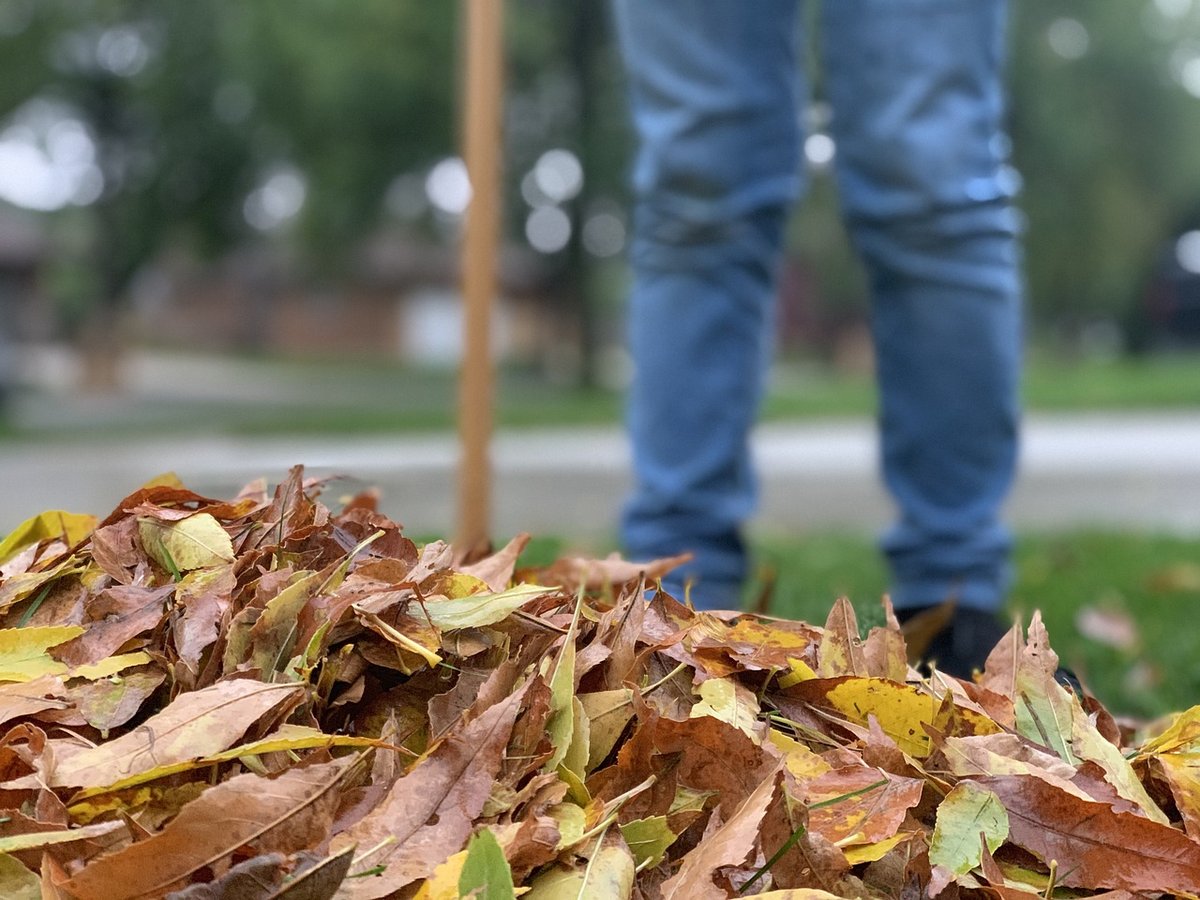
Raking leaves is one of several ways that you can prepare your lawn for winter. Making sure you sneak in one last mow before the start of winter will set your grass up for success as well.
After the winter is over, you’ll likely need to do some spring clean-up tasks like picking up any remaining leaf litter and debris. Branches and twigs commonly end up in the yard after our harsh New England winters.
Spring lawn care will also involve starting some valuable lawn care services like lawn fertilization and weed control. These will continue from spring through late fall/early winter.
Ongoing New England lawn care will help you see the most possible success with your lawn.
Advanced Lawn Care Techniques
The best lawns are the result of a partnership between the homeowner and a professional New England lawn care service, with each taking ownership of certain services. Services that you’re likely handling on your own include watering, mowing, and general clean-ups (like leaf and debris clean-up).
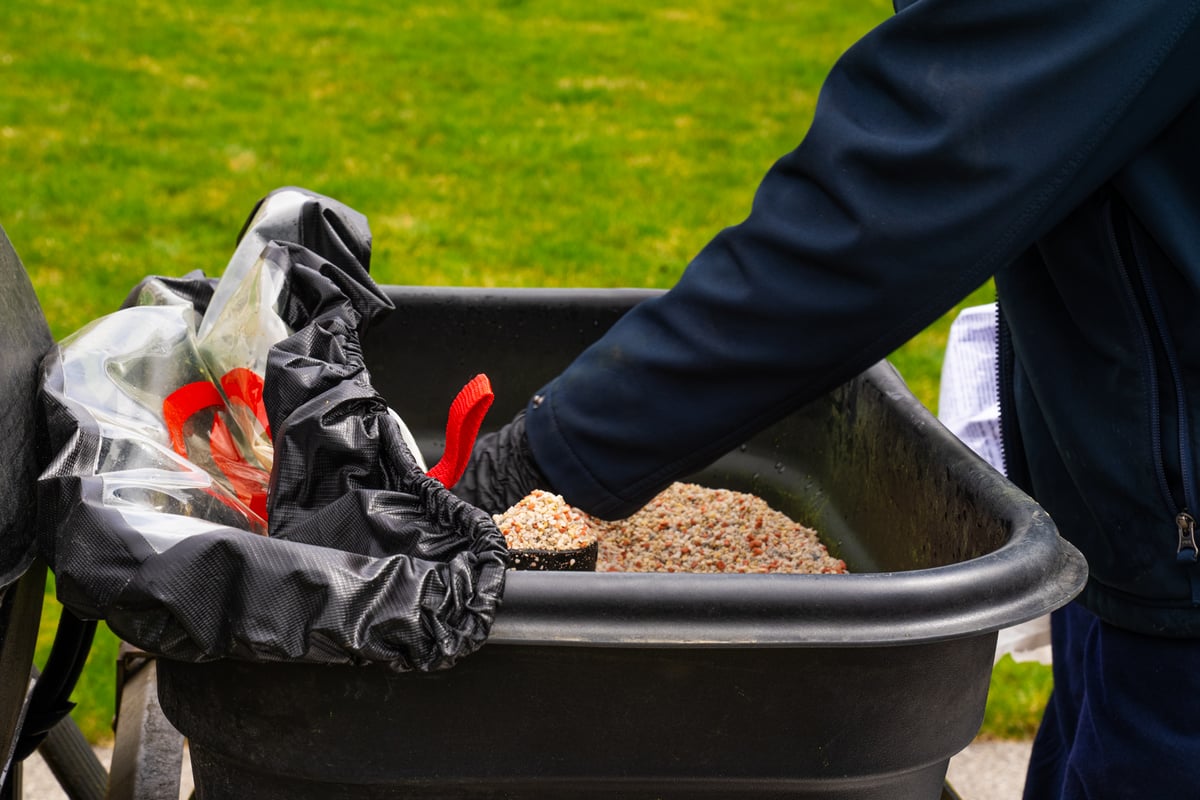
However, a lawn care professional might be handling services like fertilization, aeration and overseeding, and pest management.
Let’s look at each of these.
Fertilizing for Optimal Growth
Fertilization is an important part of your New England lawn maintenance plan. If your lawn is lacking in color, thickness, or overall vigor, it could be that it’s not receiving the proper nutrients that it needs to perform its best. But this is where fertilization can help.
At Seacoast Turf Care, we use an organic-based lawn fertilizer that contains both micro and macronutrients to support your lawn’s health. Lawn bio-nutrition with organic materials will help make nutrients more accessible to your grass plants. This includes “microbes” (or “microorganisms”) that are beneficial to your soil health.
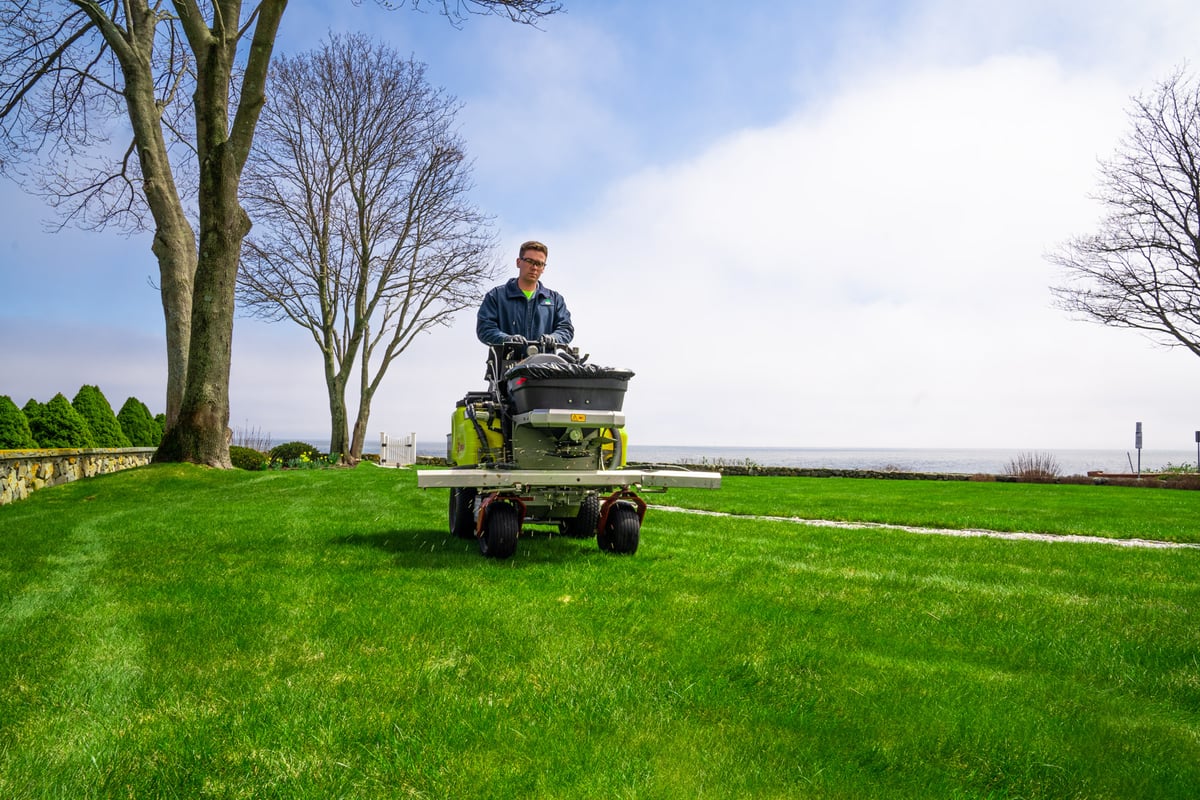
These microorganisms help make the nutrients in the fertilizer more effective. Depending on the type of fertilizer best suited for your lawn and time of year, those nutrients will be absorbed into your lawn at different rates. Good lawn biology will help your lawn’s roots to absorb more of these vital plant nutrients. That means that we’re helping build stronger, healthier soil that will help you to grow better grass.
As far as when to fertilize your lawn in New England, we fertilize throughout the New England lawn care schedule, just at different rates of application. Lawn fertilization is needed at different times of the year for various reasons.
Aeration and Overseeding
Another valuable New England lawn care service is aeration and overseeding.
Lawn aeration is the process of pulling small cores of soil from the ground and depositing them back on the lawn where they will break down and recycle nutrients back into the soil. Put simply, this helps your lawn to breathe.
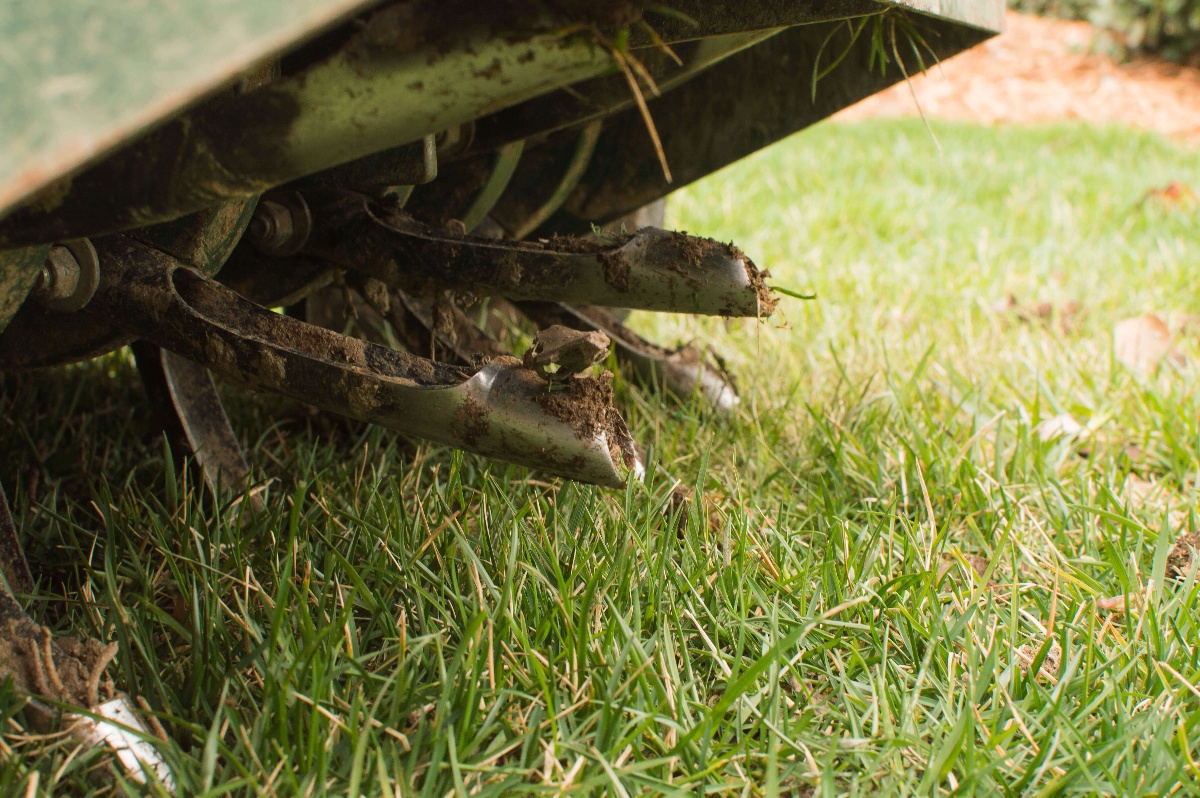
Some of the benefits of aerating your lawn include:
- Reduced soil compaction: New England lawns are known to become easily compacted. This can make it difficult for oxygen, water, and nutrients to percolate down to the root zone. But aeration can help alleviate that compaction and produce an overall healthier lawn.
- Breaking up thatch: Lawn aeration can also help break up thatch, the naturally occurring dead organic material that commonly builds atop the soil. Thatch build-up can be another reason why oxygen, water, and nutrients struggle to reach your lawn’s roots. Newer methods, such as liquid aeration, are not as effective at achieving these results.
- Providing seed-to-soil contact: We like to also perform overseeding at the time of lawn aeration since this provides optimal seed-to-soil contact. When the seeds fall into the holes created during aeration, your new grass has the best chance at healthy growth. The result is filling in baring spots and growing thicker, healthier turf.
- A healthier, more dense lawn: If you care about a dense and healthy lawn, then you’re going to want to make sure lawn aeration and overseeding are part of your New England lawn maintenance plan. In general, people find that lawns that are well-aerated grow stronger, healthier, and have fewer weeds over time. This will eventually also mean less need for weed control products as a thickened lawn will start to choke out weeds on its own.
As far as when to aerate a lawn in New England, the fall is the best time for this service. This is because fall is the optimal time of year for new grass to grow. The air is cooler but the ground is still warm. Ensuring proper aftercare for your new seed is critical to its success.
Lawn Pest Management
Lawn pests can be a huge source of frustration. Whether it’s surface-feeding insects or lawn grubs (which feed on the roots of grass), the last thing that you want is your lawn to be destroyed by pests.
Fortunately, with the right solutions, that doesn’t have to be the case.

Lawn grubs in particular are a major problem here in New England. These pests hatch in the soil and then stay there where they feed on the lawn’s roots for nourishment.
This is why we recommend preventative grub control. In the end, preventative measures are significantly less expensive than repairs. It’s something that we take so seriously that we include it in all three of our lawn care programs.
It’s simply not worth risking the chance that grubs could destroy your turf. Our grub control for lawns is optimally timed to help give you the best results.
Dealing with Lawn Problems in New England
Are you dealing with a lawn problem? Unfortunately, part of New England lawn care is simply just troubleshooting problems at different times of year and implementing the proper solutions. While there are many different lawn problems that can manifest in various ways, we’re focusing on three that we see quite often: weeds, disease, and winter lawn damage.
You may not feel as though you’re thoroughly enjoying your lawn if you’re dealing with one or more of these problems.
Lawn Weeds
Nothing in life is promised except death…and lawn weeds. Okay, so we changed the latter part of that saying, but sometimes it sure feels like it. You might feel as though you’re doing all the right things, but lawn weeds still seem to creep in.
.jpg?width=1200&height=900&name=weeds%202%20(1).jpg)
While New England lawn weeds, like broadleaf plantain, are a common problem, the good news is that there are effective solutions. Your best course of action is to work with a lawn care professional that uses a multi-faceted approach to weed control including both pre-emergent and post-emergent herbicides.
The time of the year also has an impact on the best approach to weed control in New England. Different types of weeds are going to thrive at different times of the year. It’s important that your lawn care provider is switching up what they’re offering and not just taking a blanket approach.
Lawn Disease
Another common New England lawn problem is disease. Lawns can get “sick” just like we can. Some of the more common lawn diseases that we see in this region include Red Thread, Dollar Spot, and Brown Patch, but there are many others.
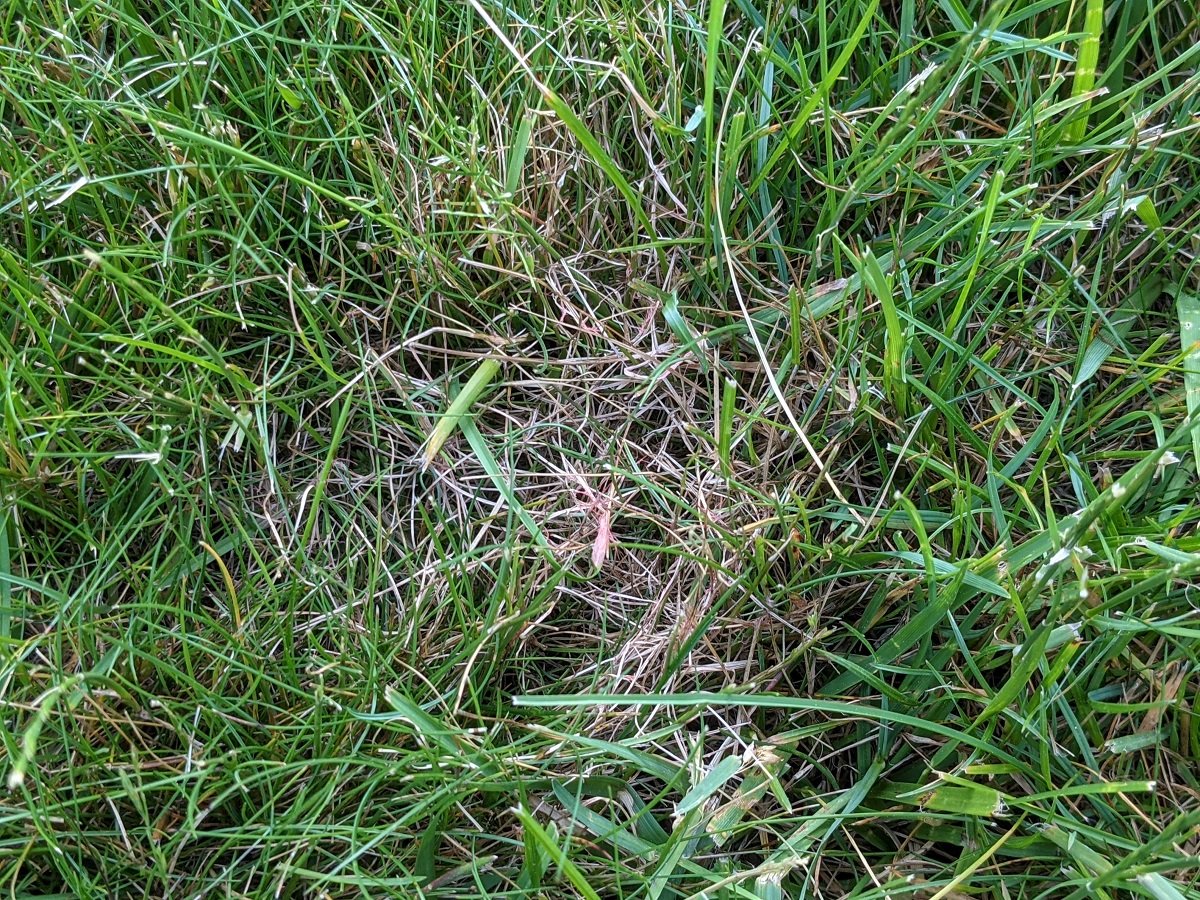
Because diseases can be prevalent in our region, we do include inspections in all of our lawn care packages. If disease is severe, we can use lawn disease treatment options, like fungicides.
It’s also important to know that healthy lawns can better defend themselves against lawn disease. Lawns are more likely to be ravaged by disease if they are already struggling from a lack of nutrients, especially during the heat of summer.
Winter Lawn Damage
Because of our rough winters, winter lawn damage is another common lawn problem in our region. Frigid temperatures, high winds, ice, and heavy snowfall can all take a toll on your lawn.

Some of the most common winter lawn problems that we see include:
- Vole Damage: During the winter, voles can tunnel through your grass. If this is occurring beneath the snow, you really have no way of knowing. It won’t be until the snow begins to clear in the spring that you will see evidence of the tunnel damage. Voles also chomp on grass during the winter when other food sources are scarce. The good news is that they don’t feed on the crown and grass should recover from this damage.
- Snow Mold: Another problem that we see in our area is snow mold. This is a lawn fungus that can thrive under the snow. There are two main types of snow mold: pink and gray. Unfortunately, this is a problem that will go unnoticed until the snow clears. When it comes to how to revive your lawn after winter, if you find snow mold, we typically advise giving the lawn a gentle rake to loosen up matted-down grass and allow the soil to dry out more quickly. In a lot of cases, snow mold will resolve itself. But if it does lead to bare patches, that’s something that we’d address with aeration and overseeding.
- Salt and Plow Damage: Since our region does see a lot of snowfall, our lawns are also subject to possible salt and snow damage. This is one of those situations where prevention is key. Making sure that your property is clearly marked for the snow plow and trying to keep salt off the grass is important. If you are using a snow removal service, talk to them about protecting your lawn.
- Crown Hydration: Crown hydration occurs when temperatures warm up, stimulating grass to come out of dormancy and start taking in water again. But when freezing temperatures return, the water will freeze. This can kill the crown. Unfortunately, this is a weather situation that can’t be avoided. But the healthier your lawn is, the better it will be able to withstand potential damage. This is why keeping up with New England lawn care is so important.
- Winter Desiccation: This condition occurs when the lawn has experienced high winds and freezing temperatures, which sucks the moisture out of the grass. This can lead to damage or death. Unfortunately, like crown hydration, desiccation is weather-related and unavoidable. But the healthier your grass is, the better it will fare.
Sustainable Lawn Care
We believe that the best way to care for a New England lawn is with sustainable lawn care practices. While not all companies adopt this belief, at Seacoast Turf Care, we’re looking to use eco-friendly and family safe solutions in New England lawn care.
One way that this can be achieved is by using the latest technology, the safest products, and best practices.
Along with that, we also emphasize the use of pollinator-safe products. We believe it’s important to protect the earth’s pollinators by using products that will not cause them harm.
There can be extra time and care involved in being eco-friendly. For instance, it might mean that your lawn care provider has to target their applications rather than just blanket-spray everything. But a company that cares about the local ecosystem will take that extra time.
Hiring Professional Lawn Care Services in New England
After reading this guide, we know that you’re probably feeling that New England lawn care can be complicated. If you didn’t know how to take care of a lawn in New England before, hopefully this helps.

But now you might be feeling like it’s a lot on your plate.
The good news is that you’re not on your own to figure it all out. There is tremendous value in hiring a professional New England lawn care service that can tackle all of this for you and provide expert guidance along the way. While we know that some people consider DIY lawn care, at the end of the day, working with a pro can take that burden away and leave you with better results.
How to Find a Good Lawn Service
In many ways, the Internet has made our lives easier when searching for providers, such as professional lawn care. But we also know that the choices can be overwhelming. How do you know what to look for in a lawn care provider?

Here are some considerations.
- Look for a science-based program: Finding a lawn care program that is rooted in science will be a key to success. For instance, at Seacoast Turf, we use soil testing to make analytical decisions that are based on data. We’re not just guessing. You want to make sure that you’re working with a company that doesn’t take a one-size-fits-all approach to lawn care.
- Seek eco-friendly solutions: As we mentioned in the previous section, we’re a company that believes in sustainable lawn care. But not all companies value this. Make sure to ask your lawn care provider if they’re using pollinator-safe products and best practices.
- Find a company committed to training: As you think about how to choose a lawn care company, another major differentiator is training and education. Ultimately, it’s the people that make up a great company so you want to make sure that any lawn care service you’re choosing has well-trained technicians.
- Choose a company with the best customer service: At the heart of any good program is great customer service. It can be frustrating if your lawn care company never answers your calls or shows up when they say they will. This is why it’s also important to find lawn care service that really care about the customer.
Cost vs. Value in Lawn Care Services
Hopefully that gives you some guidance to follow as you search for the right New England lawn care provider.
We want to take a moment to mention that it’s important you avoid shopping on price alone when choosing a lawn care solution. Keep in mind that there is a huge difference between “cost vs. value.”
What we mean by that is the fact that while one lawn care company might have a less-expensive price, they might also be giving you fewer services or even subpar service.
As with most things in life, you tend to get what you pay for when shopping for lawn care.
Your Wise Choice for Lawn Care in New Hampshire, Maine, and Northeastern Massachusetts
Properly caring for your lawn will result in many benefits. With proper New England Lawn Care, tailored to our region, you’ll start seeing a thicker, greener, and healthier lawn.
In order to get the best results, you’re probably thinking about hiring a pro and we’d love for you to consider Seacoast Turf Care as your lawn care provider.
At Seacoast Turf, we’re not only looking to deliver the lawn care results you’re after, but we’re also looking to help make life less stressful for you. We provide lawn services in the seacoast region of New Hampshire, Maine, and Northeastern Massachusetts.
Want to learn more about what makes us a great choice for your lawn care needs? At Seacoast Turf Care, we service NH towns near Stratham, North Hampton, Exeter and many more. Get lawn care pricing for your Southern NH, Southern Maine, or Northeastern Massachusetts property.
Image Source: raking fall leaves, lawn mower, sprinkler heads
